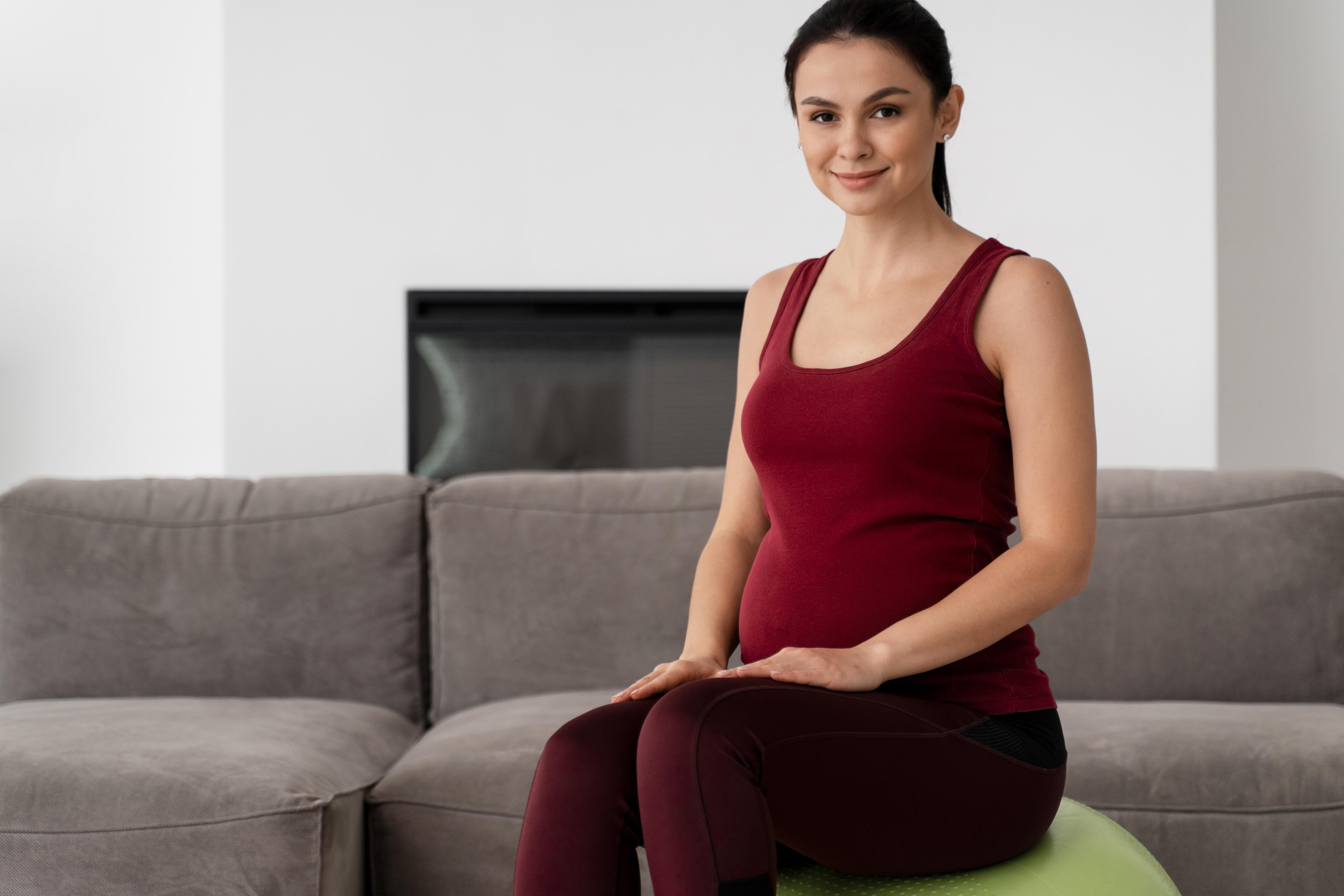
Neck and shoulder pain can be, well, a pain in the neck (and shoulder).
It’s something that a lot of us deal with, whether it’s from being hunched over our laptops while working from home, slouching, or even stress.
Understanding this nagging discomfort is the first step in overcoming it and finding some much-needed relief.
Let’s get started.
Understanding neck and shoulder pain
Your neck and shoulder region is a complex network of bones, muscles, tendons, and nerves. In the neck, also known as the cervical spine, seven small vertebrae support the weight of your head and allow a wide range of motion. Surrounding these bones are muscles and tendons that control your movement and provide stability.
Your shoulders, consisting of the shoulder blades (scapulae) and upper arm bones (humeri) are anchored by a multitude of muscles, including the rotator cuff. This area is also rich in tendons, which connect muscles to bones and ligaments, which connect bones, ensuring joint stability.
These structures work together to help your neck and shoulders perform a range of functions. But, because of their complex nature and their constant use, the area is prone to tension, strain, and injury.
Causes of neck and shoulder pain
Poor posture and ergonomics
Did you know that some people claimed their neck and shoulder pain increased when working from home during COVID-19 lockdowns?
Poor posture and bad ergonomics can really take their toll on your musculoskeletal health. It can be easy to forget to sit up straight when we’re hunched over our computers or phones, especially in these new work-from-home and hybrid roles. This unnatural alignment puts undue stress on your neck and shoulder muscles.
But even if you’re working from the office, you still might fall victim to pain. Poor ergonomics in the workplace or home office, like chairs at incorrect heights or screens positioned too low, contribute significantly to chronic pain. Ensuring proper alignment and ergonomically designed workspaces can help alleviate and prevent neck and shoulder pain.
READ MORE: The rise of ‘tech neck’
Muscle strain and injury
Overexertion or engaging in activities that the body is not accustomed to can lead to muscle strains, especially if you’re not warmed up and ready to go. It’s also often seen if you start a new sport or other physical activities without properly conditioning yourself.
You might also injure your neck or shoulders accidentally, through falls or sudden impact, which can cause immediate and severe neck and shoulder pain. These strains or injuries can lead to muscle stiffness, spasms, and discomfort that may require physio or other treatments to heal properly.
READ MORE: What happens if whiplash goes untreated?
Arthritis and other medical conditions
Arthritis, particularly osteoarthritis and rheumatoid arthritis, can affect the joints in your neck and shoulders, leading to pain and stiffness.
Other conditions can also impact your musculoskeletal system, like fibromyalgia, which causes widespread muscle pain, including in your neck and shoulders.
Inflammation and degeneration of the spine can also happen as a result of various diseases, leading to chronic neck and shoulder pain.
READ MORE: How the Mediterranean diet can help with arthritis
Pinched nerves and herniated discs
The vertebrae in our necks can be prone to conditions like herniated discs, where the soft tissue inside a spinal disc protrudes and puts pressure on your surrounding nerves. This can cause a sharp or burning pain often referred to as a pinched nerve.
These conditions can lead to pain in other parts of the body, too, not just your neck and shoulders. You may experience pain in your arms, hands, or other areas, depending on where the nerve compression occurs.
READ MORE: What is nerve pain and how can you treat it?
Stress and tension
Stress can have a pretty significant impact on our health, both mentally and physically. Stress can lead to muscle tension, particularly in your neck and shoulder region. When we’re stressed, our body’s natural response is to tighten up as a protective measure.
Prolonged tension can lead to chronic pain, headaches, and difficulty in relaxing these muscle groups. Managing stress is easier said than done, but implementing relaxation techniques, mindfulness, and regular exercise can do wonders for your stress levels and leave you feeling pain-free.
READ MORE: Getting tension headaches? Here’s how to find some relief
Symptoms of neck and shoulder pain
Your symptoms may differ depending on where your neck and shoulder pain is coming from, but will generally include the following:
- Pain and stiffness: pain may be localised in the neck and shoulder area or could radiate down your arm. It can range from a dull, aching discomfort to a sharp burning sensation, depending on the cause.
- Limited range of motion: you may find it hard to turn your head or lift your arms, indicating stiffness or tightness in your muscles and joints.
- Headaches: neck and shoulder pain can often lead to tension headaches. These will often start at the base of your skull and radiate towards your forehead.
- Muscle spasms: sudden, involuntary muscle contractions in the neck and shoulder area can cause sharp pain and make it difficult to move comfortably.
- Numbness or tingling: if your pain is related to nerve compression, as in the case of an irritated nerve, herniated disc or pinched nerve, you might experience numbness, tingling, or a ‘pins and needles’ sensation in your arms or hands.
- Swelling and tenderness: if your pain is caused by injury or inflammation, the affected area might swell and become tender to the touch.
- Weakness: you might experience a general feeling of weakness in your neck, shoulders, or arms.
- Clicking or popping sounds: you may hear or feel clicking or popping in your neck or shoulder area when moving your head or shoulders, often indicating joint issues.
Physiotherapy treatment for neck and shoulder pain
A physio for neck pain can help in a variety of ways and will tailor techniques and therapies to your specific condition or needs.
Assessment and diagnosis
Your physio will conduct a thorough assessment during your first consultation, including a medical history review and a physical examination to diagnose the specific cause of your pain. They may test your range of motion, muscle strength, nerve function, and identify any movement patterns contributing to the pain.
Manual therapy
Manual therapy can include hands-on techniques such as massage, mobilisation, and manipulation. Your physio might work on muscles, joints, and soft tissues to improve movement, reduce stiffness, and alleviate pain.
Therapeutic exercise
Personalised exercise programs are designed to strengthen and stretch the muscles around your neck and shoulders, improve flexibility, and increase your range of motion. These exercises can also help in correcting your posture to prevent future pain. These programs are something you can also do at home, meaning you can still progress, even when you’re not in front of your physio.
Posture education and ergonomic advice
Your physio can guide proper posture, especially during activities that might contribute to your neck and shoulder pain like sitting at a computer or lifting heavy objects.
They can also give you recommendations on good ergonomics, especially if you work from home.
Pain management techniques
Pain management will differ from person to person, so your physio is the best person to turn to if unsure about how you should be treating your pain. They might recommend heat and cold therapy, various stretches or mobility strategies.
Dry needling
Dry needling can be really effective in relieving pain and muscle tension. This technique involves inserting fine needles into specific points in your body, including your neck and shoulders.
Taping or bracing
Depending on your pain or injury, your physio might use kinesiology taping or braces to support your neck and shoulders. This can help alleviate pain and prevent further injury.
Home remedies for neck and shoulder pain
Pain relief and management
Cold and heat therapy
Both cold and heat therapy have their place in treating neck and shoulder pain.
Cold therapy is best used immediately after an injury or at the onset of pain. It helps reduce blood flow to the affected area which can help with inflammation and swelling, especially around a joint or tendon. Look at using ice packs, frozen gel packs, or even a bag of frozen peas. Apply the cold compress for about 15-20 minutes every hour or as needed.
Heat is more effective for chronic pain or stiffness. It helps increase blood flow and circulation to the area, which soothes discomfort and increases muscle flexibility. A warm bath, heated gel packs, or a warm towel can be used. Apply for 15-20 minutes at a time, and make sure it’s a comfortable temperature to avoid burns.
Over-the-counter pain relief
Common medications like ibuprofen can be effective in reducing neck and shoulder pain. These work by reducing the production of substances in the body that cause inflammation and pain.
Those with certain gastrointestinal issues or kidney problems may not be able to use NSAIDs (Non-Steroidal Anti-Inflammatory Drugs) and may be better off using acetaminophen, which doesn’t reduce inflammation but can still help alleviate some pain.
If you’re unsure about which over-the-counter pain reliever is right for you, check with your healthcare provider.
Epsom salt baths
Epsom salt, more formally known as magnesium sulphate, is widely used in baths to help relieve muscle soreness and stress. The magnesium and sulphate are believed to be absorbed through the skin, which can help reduce muscle inflammation and improve muscle function.
Fill your bath with warm water and add about 1 to 2 cups of Epsom salt. Soak in the bath for at least 12 minutes. The warm water can also work wonders in relaxing your muscles and relieving tension!
Keep in mind that while Epsom salt baths can be great, they’re not recommended for people with certain health conditions, including those with heart problems or diabetes.
Exercises for neck and shoulder pain
- Neck tilts: tilt your head to one side, bringing your ear toward your shoulder until you feel a stretch. Hold for 15-30 seconds, then repeat on the other side.
- Shoulder rolls: slowly roll your shoulders in a circular motion, first forward, then backward. Do this for 15-30 seconds in each direction.
- Chin tucks: sit or stand with good posture. Gently tuck your chin toward your neck, creating a ‘double chin.’ Hold for 5 seconds, then release. Repeat this a few times.
- Shoulder blade squeeze: sit or stand with your arms at your sides. Squeeze your shoulder blades together, as if trying to hold a pencil between them. Hold for 5-10 seconds, then release. Repeat several times.
- Arm circles: extend your arms out to the sides at shoulder height. Slowly make small circles with your arms, gradually increasing the size of the circles. Do this for about 30 seconds, then reverse the direction.
- Doorway stretch: stand in a doorway. Lift your arm so it’s parallel to the floor and bend at the elbow so your fingers point towards the ceiling. Place your hand on the door frame and lean forward, stretching the front of your shoulder. Repeat on the other side.
- Upper back stretch: clasp your hands together in front of you and stretch your arms forward. Lower your head in line with your arms and round your upper back. You should feel a stretch between your shoulder blades.
- Neck turns: gently turn your head to one side as if looking over your shoulder, keeping your shoulders still. Hold for 15-30 seconds and then switch to the other side.

Neck and shoulder pain prevention
Maintain good posture
Proper posture is crucial, especially if you spend long hours sitting. Keep your shoulders in line with your hips, your ears directly over your shoulders, and your feet flat on the floor. Adjust your workstation so that your computer screen is at eye level and your keyboard and mouse are within easy reach.
Manage your stress
High stress levels can lead to tension in your neck and shoulders. Practice stress management techniques like deep breathing, meditation, or mindfulness.
Take frequent breaks
If you work at a desk, take short breaks every hour to stretch and move around. This will help relieve some muscle tension and improve circulation.
Exercise regularly
Regular exercise, including strength training and stretching, can help keep your neck and shoulder muscles strong and flexible. Yoga or Pilates are particularly good for improving posture and alignment.
Use proper technique
Whether you’re exercising, lifting heavy objects, or engaging in any physical activity, using the correct technique and body mechanics is essential to prevent strain and injury.
Use an ergonomic workspace
Ensure your workspace is ergonomically set up to support good posture. This includes a chair with lumbar support, a desk at the right height, and computer screens positioned to prevent straining your neck.
Stay hydrated
Adequate hydration is important for maintaining the health of the discs between the vertebrae in your spine.
Ensure a good sleeping position
Use a supportive pillow and try to sleep in a position that maintains the natural curve of your spine. Avoid sleeping on your stomach, which can strain your neck.
Warm-up before exercise
Always warm up before exercising to prepare your muscles and joints for the activity, reducing the risk of strains and injuries.
Limit phone and tablet use
Reduce the amount of time you spend looking down at your phone or tablet. When you are using these devices, try to keep them at eye level to avoid bending your neck.
Adjust car seats and headrests
When driving, make sure your seat and headrest are positioned in a way that supports your back and head comfortably – no one wants to strain their neck and shoulders while driving!
Don’t let neck and shoulder pain hold you back
Neck and shoulder pain can stem from a range of cases and manifest in numerous ways, but the good news is, relief is within your reach. Whether it’s making small adjustments to your daily routine, incorporating simple stretches, or seeking professional help from a physio for neck pain, you have the power to ease your discomfort.
Book an appointment with our experienced South Perth physios today!




